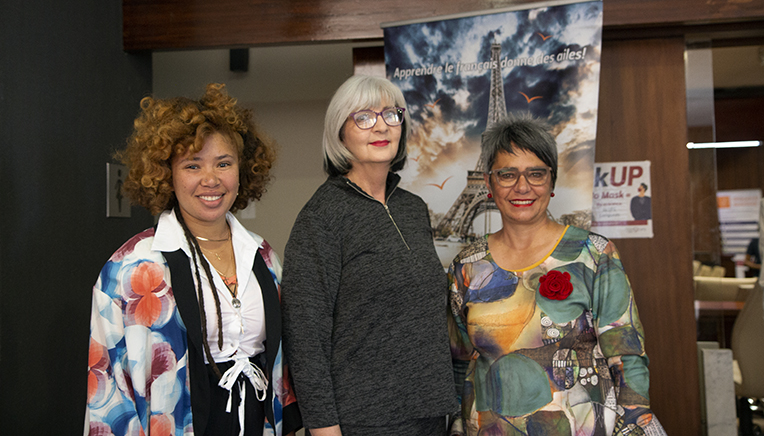Students and lecturers from the department who attended the discussion had the privilege of witnessing the expertise and experience of the advisory panel first hand. The other two members of the advisory panel are Mariska van der Merwe, a teacher at the Meisieskool Oranje, and Wyno Simes, Curator of the National Afrikaans Literature Museum and Research Centre (NALN) in Bloemfontein. The University of the Free State (UFS) has introduced the concept of practice panels in its faculties and academic departments to provide practice-based expertise to students as well as advice to lecturers.
Two prestige bursaries were also presented to two postgraduate students. Lynthia Julius, author of the award-winning book Uit die Kroes, is the first recipient of the JC Steyn Prize, and Corné Richter received the Marius Jooste Prize from the SA Akademie vir Wetenskap en Kuns.
Important role of the media threatened
Price – who worked as a journalist at Die Burger and made a name for himself in media and television circles, and who is also the owner of the online news publication
Food for Mzanzi – said “a democracy is nothing without the media”. He referred to some of the biggest news events in recent times where the media has played an important role in exposing crime and corruption in the highest circles of executive government.
Examples of this are the Gupta/state capture scandal, the Zuma corruption, as well as the asbestos fraud by Ace Magashule and the Free State government. “This says something about a country where people steal money to implement idleness,” Price said.
He also warned that things were not ‘going well’ with the media in SA and that the media – also internationally – are in danger. The impact of the COVID-19 pandemic on the media will be with us for a long time. “The circulation figures of daily newspapers fell by about 40% of the total sales.” Sunday papers can, to some extent, keep their heads above water thanks to government advertisements. Price also believes that niche markets are the future.
Publishing industry changing in SA
In turn, Nelleke de Jager talked about the challenges that publishers must overcome today. “Educational publishers are publishing the largest number of outputs in SA,” she said. She also mentioned that retail publishers such as Penguin Random House and Pan Macmillan are changing the landscape for the better. “The South African publishing industry is changing, not waning,” said De Jager.

From the left Lynthia Julius; Prof Heidi Hudson, Dean of Faculty of the Humanities and Corné Richter.
(Photo: Rulanzen Martin)
Book lovers will remember with great nostalgia that Leserskring/Leisure Books was the leader in terms of book sales a decade ago. “The closure of Leisure Books damaged the outputs and turnover of NB Publishers,” said De Jager.
De Jager also told students about the skills that are needed to survive in the industry. “It is important to master a variety of skills, such as writing and reading skills, project management, and editorial know-how.” She also jokingly said that anyone interested in the publishing industry should first work as a waiter, since it teaches one to be humble.